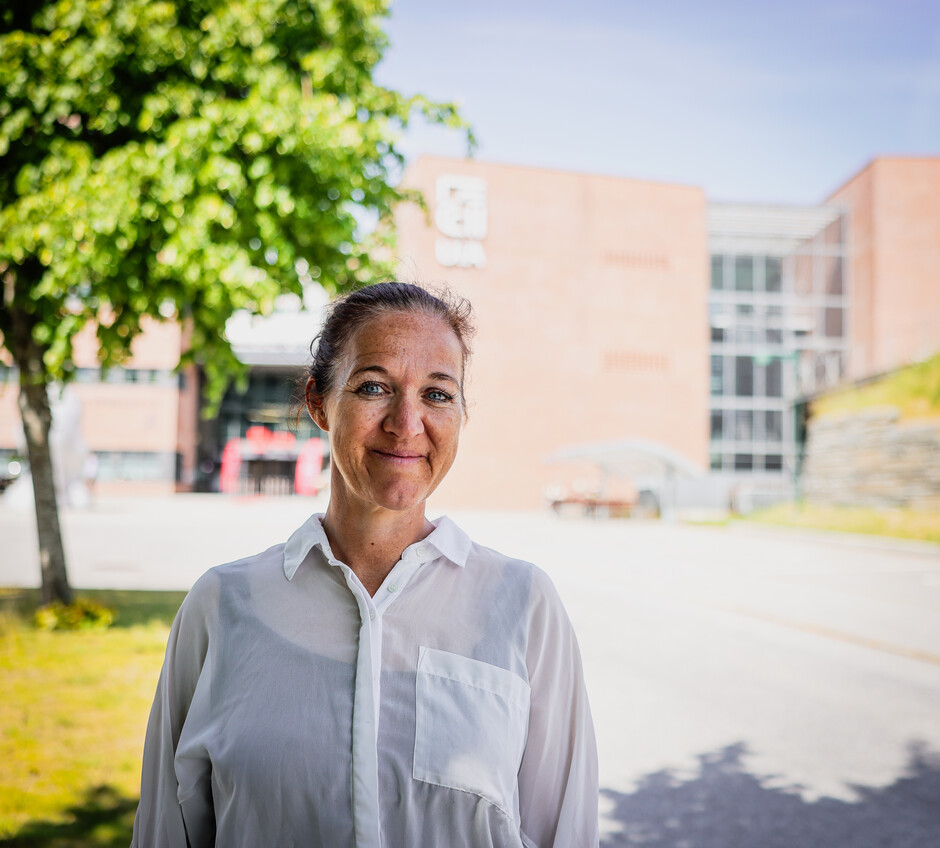“I saw clearly how important it is for people to recognise themselves in the experiences of others. There is a need for an offer like this for everyone, regardless of where you live in Norway.”
So says Anita Øgård-Repål, Associate Professor in the Department of Health and Nursing Sciences at the University of Agder (UiA).
A great help for those who live in hiding
She has done a study on peer-to-peer work. That is, people who help others with the same diagnosis. In this study, she interviewed HIV-infected persons.
“They are not healthcare workers, but people who’ve lived with the diagnosis for several years. Many of them have full-time jobs and do this voluntarily. They are of great help to others who may have just been diagnosed and are living in hiding. Many HIV-infected people fear that they will be stigmatised if they talk about their diagnosis,” she says.
Øgård-Repål's findings show that when people with a diagnosis help each other, treatment improves and trust in the hospital increases. She hopes her work can inspire support services for other chronic diseases.
HIV research
In Europe, little research has been done on peer-to-peer work related to HIV. Øgård-Repål's study is the first in the Nordic region.
To learn more about the experiences of HIV-infected people, she spoke to 16 individuals from different parts of the country. In addition, she conducted two focus group interviews and interviewed five nurses.
To carry out the study, the UiA researcher collaborated with hospitals in Agder, Trondheim, Tromsø, Bodø and Østfold.
“Many people think they are going to die”
Most conversations in peer-to-peer work take place one to one in a private room at the hospital or digitally. The conversations are meant to help patients see that they can live normal lives.
“We see that these conversations mean a lot to them. The peer becomes a role model for how to live well with the diagnosis,” the UiA researcher says.
As part of peer-to-peer work, nurses and doctors are also available for conversations and medication advice. They can provide up-to-date knowledge and exchange experiences with their patients.
“Many people think they are going to die of HIV and may not know that you can get good medical care,” says Øgård-Repål.
She says that there are many prejudices about HIV that are not true.
“It is a sexually transmitted disease, but there is little risk of infection both with and without medication. Many think they will be physically weaker, but many live a normal life and do not look sick. Still, you are more vulnerable to diseases such as diabetes, cancer and cardiovascular diseases,” says the researcher.

Afraid of being labelled a prostitute
During the study, Øgård-Repål found that people of immigrant background in particular had difficulties accepting the diagnosis. Their cultural background often associates HIV with homosexuality or prostitution.
“Some come from countries where homosexuality is illegal and strongly condemned. If they get tested for HIV, they face prejudices and they fear what life with the diagnosis will be like in Norway.”
The researcher found that meeting another HIV-positive person, whether Norwegian-born or from a minority background, helped improve the quality of life and the trust in the health information they received.
“They receive information about the diagnosis from health professionals, but it gains more credibility when the peer meets them. It is easier for them to understand when it is explained by someone in the same situation, who has lived with it for a long time,” she says.
Big differences
In some cases, however, the fear can be so great that they do not want any help. They worry what will happen if word about their diagnosis were to spread in the local community.
In the course of the study, Øgård-Repål observed that many people find it difficult just to take part in an anonymous conversation. The researcher noted that there was a big difference between those who took part in conversations and those who did not.
“Those who open up to conversations did not suffer as many difficult days. With the safe environment of a hospital, they didn’t think that anyone would judge them,” she says.
